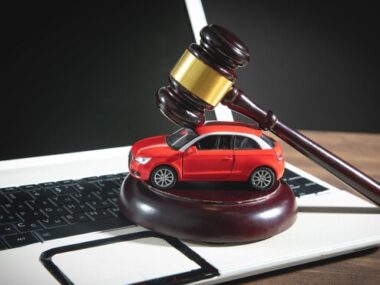How Auto Insurance Policies Are Structured
Auto insurance policies typically follow the car, not the driver. What does that mean for you? Basically, if you lend your vehicle to a friend or family member, your insurance will provide coverage no matter who’s behind the wheel.
However, there are a few exceptions to keep in mind.
Regular drivers must be listed on the policy. If someone else drives your car frequently or regularly, you’ll need to add them as an additional insured driver to ensure full coverage. Leaving them off the policy could result in denied claims or cancelation of your policy.
Coverage limits may differ for permissive drivers. The coverage limits, deductibles, and other policy details for additional insured drivers are typically the same as for the primary insured. However, the insurer may provide more limited coverage for permissive drivers – people who drive the vehicle infrequently with your permission. It’s best to check with your insurance provider to confirm the details.
When Coverage Stays With the Car
When you buy a new car, the dealer will often try to sell you auto insurance for that vehicle right then and there. But what exactly are you buying? Auto insurance actually follows the vehicle, not the owner or driver.
So if you have a multi-car household, the coverage you purchase will apply specifically to the car it’s bought for. If you lend your vehicle to a friend or relative, your insurance will cover them while they’re driving it. The details of your policy, like the limits of liability and coverage amounts, will remain the same no matter who’s behind the wheel.
On the other hand, if you drive a vehicle you don’t own, like a rental car, your own auto policy typically won’t provide coverage. Some policies extend liability coverage, but not always comprehensive and collision. It’s best to buy additional insurance from the rental company to be safe.
Some situations get tricky, like if you purchase a new vehicle but still have your old one. You’ll need separate policies for each car. Or if you’re in the process of selling a vehicle, coverage will end as soon as the new owner takes possession. It’s best to contact your insurance provider right away in these kinds of transitions.
READ ALSO: Steps to Get a Free Auto Insurance Quote Online
When Coverage Stays With the Driver
However, below are times certain situations where the coverage remains with the policyholder.
1. If you lend your car to someone else
If you loan your car to a friend or family member, your auto insurance policy will usually still provide coverage. The details of your policy, like the limits of liability and deductibles, remain the same. However, if the other driver causes an accident, it may impact your premiums when your policy renews. It’s a good idea to check with your insurance provider about their specific rules regarding loaning your vehicle to others before handing over the keys.
2. If you rent a car
Renting a car for a road trip or when your own vehicle is in the shop? Good news your personal auto insurance policy will typically extend to a rental car. The coverage may be more limited, though, so you’ll want to check with your insurance provider for the details.
3. If you drive for ridesharing
If you drive for a ridesharing service like Uber or Lyft in your spare time, your personal auto insurance likely won’t provide coverage during this time. Most standard policies specifically exclude commercial driving activities. You’ll need to purchase a commercial ridesharing insurance policy to ensure you have coverage for driving passengers, yourself, and your vehicle.
4. If you move to a new state
When relocating to a new state, your auto insurance coverage may or may not follow you. It depends on the insurance laws in your current and new state. In some cases, you’ll need to purchase a new policy that meets the minimum requirements of your new state. Connect with your insurance agent before the move to determine the best solution and ensure continuous coverage.
Whether coverage follows the car or the driver depends on your specific situation and location. The details of your auto insurance policy, your state’s regulations, and the circumstances surrounding how the vehicle is being used all factor into this determination.
READ ALSO: Home and Auto Insurance Bundles: How to Find the Best Deals 2024
What Happens in Special Circumstances
Auto insurance generally follows the car, not the driver. However, there are a few exceptions to this rule:
1. Temporary drivers
If you lend your vehicle to a friend or family member on a temporary basis, your auto insurance will typically still cover the vehicle. However, there may be certain restrictions. For example, some companies will not provide coverage if the temporary driver lives with you or will be driving the vehicle regularly. The specifics of temporary driver coverage will depend on your individual policy and insurance company.
2. Unlisted regular drivers
In some households, multiple people regularly drive the same vehicle. If you don’t list all regular drivers on your policy, your insurance company may deny a claim in the event of an accident. It’s best to list all licensed household members as drivers on the policy to ensure full coverage.
3. Teenage drivers
Teenage drivers need to be specifically listed on an auto insurance policy to have coverage. Simply listing a vehicle on the policy is not enough. The reason for this is that teens pose a higher risk to insure, so the insurance company needs to evaluate their driving history and experience to determine rates. If an unlisted teen driver has an accident in your vehicle, the claim could be denied.
4. Vehicle ownership changes
If you sell your vehicle, insurance coverage will end for that vehicle on the date of the sale. The new owner will need to obtain their own auto insurance. If you purchase a new vehicle, you will need to update your policy within a certain number of days to add coverage for the new car. The specific requirements will depend on your state’s laws and your insurance company’s policies.
READ ALSO: Here’s Why You Should Get Auto Insurance From Costco
Tips for Understanding Your Car Insurance Coverage
Here are some tips to help make sense of your car insurance policy:
1. Know if you have liability only or full coverage.
Liability only covers damages to other vehicles or property. Full coverage also protects your own vehicle. If you have an auto loan, your lender likely requires full coverage.
2. Understand your coverage limits.
This is the maximum amount your insurance will pay per accident. Higher limits mean more protection but higher premiums. Make sure your limits adequately cover the value of your vehicle and potential medical bills.
3. Know what’s included in your comprehensive and collision coverage.
Comprehensive covers damage from events like theft, vandalism or natural disasters. Collision covers damage from accidents. These coverages pay to repair or replace your vehicle. Consider dropping them for older cars with little value.
4. See what extras you have (or need).
Add-ons include roadside assistance, rental car reimbursement, and uninsured motorist coverage. Think about what best fits your needs and budget.
5. Ask about discounts you may qualify for.
Discounts can lower your premiums. Common ones include bundling with home insurance, safe driver, good student, anti-theft device, and loyalty. Inquire about any you may be eligible for.
6. Review and update your policy regularly.
Your coverage needs change over time as life circumstances change. Make sure your limits still meet your needs and you’re receiving all eligible discounts. Shop around at renewal for the best overall value.
Conclusion
Understanding your car insurance coverage gives you confidence in knowing exactly what protections you have in place should an accident or other incident occur. Review the details of your specific policy and don’t hesitate to contact your insurance provider with any questions you may have.





